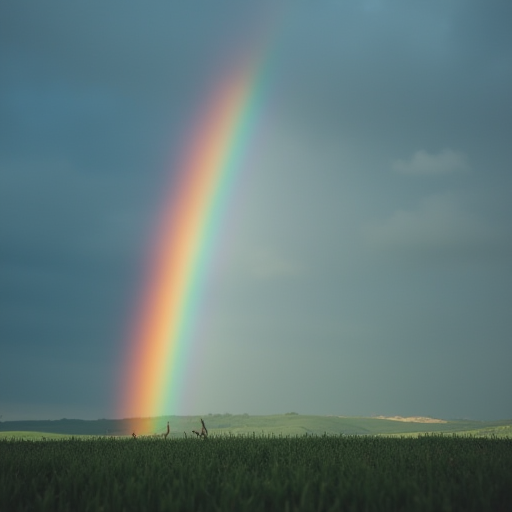
Why Do Rainbows Appear After Rain?
Rainbows are one of nature's most stunning displays, often appearing after a rain shower when the sun begins to shine again. These colorful arches of light have fascinated humans for centuries, inspiring myths, art, and scientific inquiry. But what exactly causes a rainbow to appear after rain? In this article, we will explore the science behind rainbows, explaining the conditions necessary for their formation and the optical principles that create their brilliant colors.
The Science of Rainbows
The Role of Rain
Rainbows require a specific set of atmospheric conditions to form, beginning with the presence of rain. Rain droplets in the atmosphere act as tiny prisms, which are essential for the creation of a rainbow. These droplets are spherical in shape and serve as the medium through which sunlight is refracted, reflected, and dispersed.
Sunlight: The Key Component
For a rainbow to appear, sunlight must be present. Typically, rainbows are seen when the rain is ending, and the sun is beginning to break through the clouds. The sun needs to be low in the sky, usually at an angle of less than 42 degrees from the horizon, for a rainbow to be visible. This is why rainbows are often observed in the early morning or late afternoon.
The Process of Refraction, Reflection, and Dispersion
The formation of a rainbow involves three key optical processes:
-
Refraction: As sunlight enters a raindrop, it slows down and bends at the boundary between air and water. This bending of light is known as refraction. Different colors of light bend by different amounts because they have different wavelengths. This phenomenon is called dispersion, and it causes the separation of white sunlight into its constituent colors.
-
Internal Reflection: Once inside the raindrop, the light is reflected off the inside surface of the droplet. This internal reflection is crucial for the light to exit the droplet at the correct angle to form a visible rainbow.
-
Refraction and Dispersion Again: As the light exits the raindrop, it undergoes refraction again, bending as it moves from water back into the air. This second refraction further disperses the light, enhancing the separation of colors.
The Result: A Spectrum of Colors
The combination of refraction, internal reflection, and dispersion results in the appearance of a spectrum of colors in a circular arc. The primary rainbow displays the colors red, orange, yellow, green, blue, indigo, and violet. Red, having the longest wavelength, appears on the outer edge of the rainbow, while violet, with the shortest wavelength, appears on the inner edge.
The Geometry of Rainbows
The circular arc of a rainbow is a result of the geometry of the refracted, reflected, and dispersed light. When observing a rainbow, the observer's back must be to the sun, with the raindrops in front. Each observer sees their own personal rainbow, as the angle of light refraction and reflection is specific to the observer's line of sight.
Rainbows are actually full circles, but the ground usually obstructs the bottom half, making them appear as an arc. From an airplane or a high vantage point, it is sometimes possible to see a full circular rainbow.
Secondary Rainbows
Occasionally, a fainter secondary rainbow can be seen outside the primary rainbow. This secondary bow is caused by light that has undergone two internal reflections within the raindrop instead of one. Due to this double reflection, the order of colors is reversed, with red on the inner edge and violet on the outer edge. Secondary rainbows are dimmer because more light is lost with each reflection.
Conclusion
Rainbows are a captivating natural phenomenon that results from the interplay of sunlight and raindrops. The processes of refraction, reflection, and dispersion work together to create a spectrum of colors, visible as a circular arc in the sky. By understanding the science behind rainbows, we can appreciate the complex and beautiful interaction of light and water that gives rise to these ephemeral wonders. So next time you see a rainbow, you'll know the fascinating journey that light has taken to bring that colorful spectacle to your eyes.
